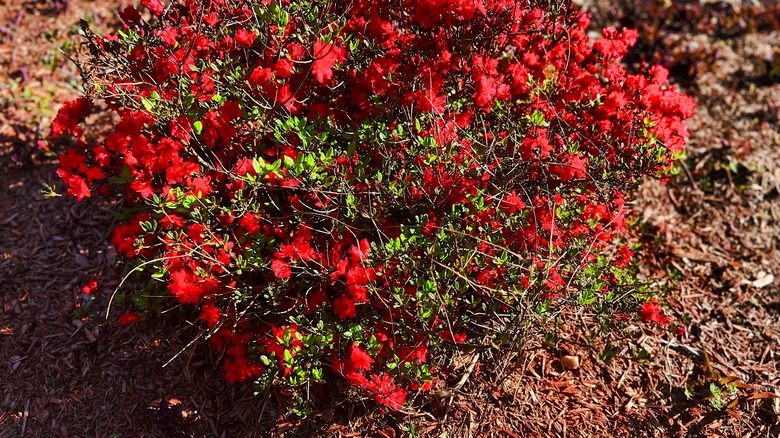Renowned for their vivid colors that can brighten up any landscape and easy maintenance requirements, azalea plants — a species of rhododendron — have become a favorite among all gardeners. Prized for their striking, funnel-shaped, fragrant blooms, these woody plants exhibit both evergreen and deciduous variants, which significantly differ in their winter hardiness levels. However, as these ornamental shrubs prefer mild climates, azaleas need additional plant care to survive the winter, particularly in areas where temperatures dip below -35 degrees Fahrenheit.
When exposed to extreme cold, azalea’s branches rupture and flake away, indicating severe winter injury. Even the flowering buds and leaves turn black, shrivel up, and drop out when facing freezing temperatures, further delaying plant recovery if the damaged leaves contract fungal diseases. So, to protect these rhododendron varieties against winter damage, adequately water them before the ground freezes and apply mulch to the soil. You can also install windbreaks and drape their foliage in burlap to protect against icy winds, where necessary.
Preparing Azalea for the winter

To winter-proof your azalea plants, discontinue fertilizer application during late summer or early fall to give them sufficient time to harden before the weather grows cold. Similarly, reduce the water amount by two-thirds during the fall, unless you live in rain-deprived regions with temperatures exceeding 40 degrees Fahrenheit. Adequately hydrating your bushy shrub is essential, as its root system doesn’t run too deep and requires residual moisture retention to brave the drying, cold winds. However, you must deeply irrigate the plant once it has suffered through a couple of hard frost seasons.
Further, spread a 3-to-5-inch mulch layer to the overwintering azalea plant’s base, while maintaining adequate distance from its trunk to avoid moisture damage and pest infestation. Use a combination of leaf mold, aged wood chips, and pine needles as organic mulch rather than whole leaves, as they may smother the ornamental. When spring arrives, remove the mulch from the soil to promote plant growth.
Protecting Azalea during winter

YouTube
If your azalea plant is newly transplanted or is exposed to frost-like conditions, it’s ideal to move it indoors or provide adequate shelter to prevent winter injuries, such as bark splits and dry leaves. It particularly applies to evergreen varieties because they aren’t cold-hardy and require more winter protection. You can use canvas, old bed sheets, burlap, or any other porous material to create a windscreen around your overwintering rhododendron. Simply hammer multiple stakes into the ground before the ground freezes, leaving a distance of at least 18 inches from the plant, and cover it. This will ensure adequate air circulation while minimizing direct contact, which otherwise damages the lush foliage.
Another option is to install a tent made up of evergreen branches — or your redundant Christmas tree — around the ornamental tree, by driving the twig ends into the ground and tying them together on the top. Some even propose wrapping your iconic plant with incandescent lights to raise its temperature by around 4 to 8 degrees Fahrenheit. But if this isn’t your style, it is best to plant cold-tolerant azalea varieties going forward.



